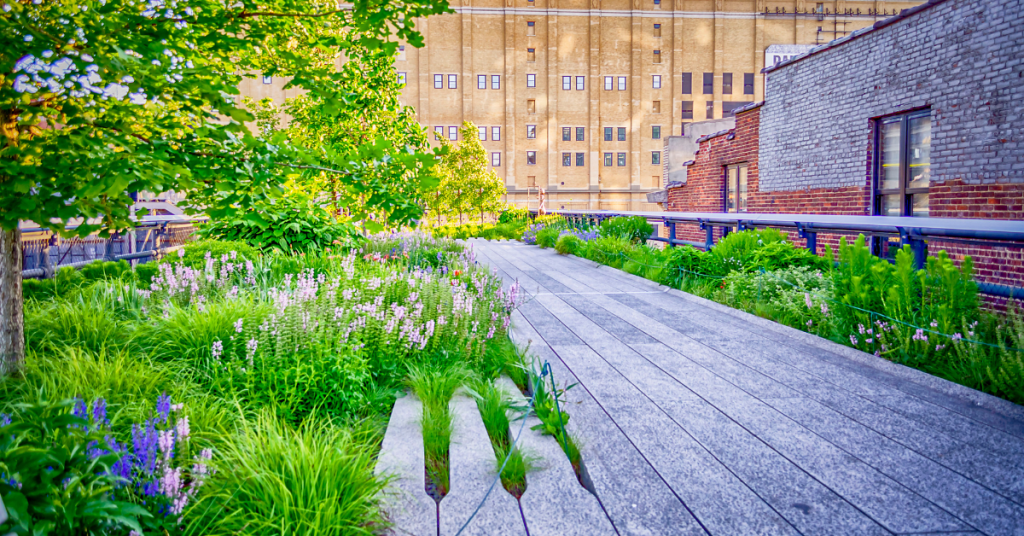
If you have clients seeking a more naturalistic landscape or there is a need to blend a formal garden transitioning to the nearby countryside, matrix plantings can provide this native aesthetic along with a number of benefits.
While the phrase ‘matrix planting’ may be an unfamiliar one, it boils down to the accepted concept of ‘right plant, right place.’ It is a self-sustaining form of gardening that focuses on attractive plantings. This style of garden may appear to be uncultivated, but it requires meticulous planning.
What Is Matrix Planting?
Matrix planting is designed to emulate the look and function of a natural ecosystem found in the wild. It takes elements of a meadow or prairie landscape and includes a tiered flower-based garden.
Dutch garden designer Piet Oudolf has popularized the look of matrix gardens with his various designs at locations such as the High Line in New York City and Lurie Garden at Millennium Park in Chicago.
Similar to choosing to place plant material with corresponding water needs in a hydrozone, matrix plantings combine three or four plants with similar needs so they knit together and form a living mulch.
“I think a lot of the matrix planting is about shifting gardeners’ attitudes to planting much tighter together and stopping with the wood mulch,” Benjamin Vogt, owner of Monarch Gardens LLC, tells Horticulture. “Mulch keeps (gardens) in a permanent establishment phase — not letting the plant set seed and make a matrix of roots that will be resilient to climate and weed pressure.”
Benefits of Matrix Planting
Matrix plantings create polycultures with multiple plant species living in the same space. This allows the landscape to be more disease and pest-resistant with the variety of plant material. The assorted types of plants also promote biodiversity and attract beneficial insects.

Matrices do take a few years to get established just like a meadow or prairie landscape, but over time they require significantly less maintenance than a formal garden. As they spread and establish density, weeds are unable to find a foothold. The maintenance that does take place includes thinning out an overly aggressive plant group or replacing unsuccessful plants.
Selecting the proper plants for the space often means additional watering is not needed as they are adjusted to that site’s soil and average rainfall.
The dense structure and varying characteristics of the plants allow the garden to look good year-round. While matrix plantings are not limited to native plant material, selecting natives can boost the sustainability and ecological benefit of the garden.
Elements of Matrix Planting
The three main elements of matrix planting are the base layer, seasonal flowers and sculptural specimens. The base layer varies from a traditional groundcover as it is typically a combination of sedges and grasses, which serve as the ground floor for the plant community. It suppresses weeds and ties the landscape together.
The seasonal flowers should be the same height or taller than the sedges and grasses used for the base layer. Clumps or drifts of flowers should be included for every season. Dwarf blue indigo, purple coneflower, butterfly milkweed and showy goldenrod are some examples of flowers commonly used in matrix plantings.
Sculptural specimens like shrubs and trees can be added last to provide a focal point or to frame a view.
As you select plant material for your matrix planting, you’ll have to find a balance between those that spread aggressively and the others that clump. Height, bloom time, texture and flower color all matter, but what is most important is to understand how certain plants thrive in the wild together. Consider each species’ needs. Those with tap roots should be paired with more shallow-rooted plants so they are not competing against one another.
Matrix planting may not be suitable for every client as it can be seen as messy or overgrown. If you’re not sure the customer understands what the end result will look like, show them other projects with this style of garden so they can grasp the unique appearance of a matrix planting.


